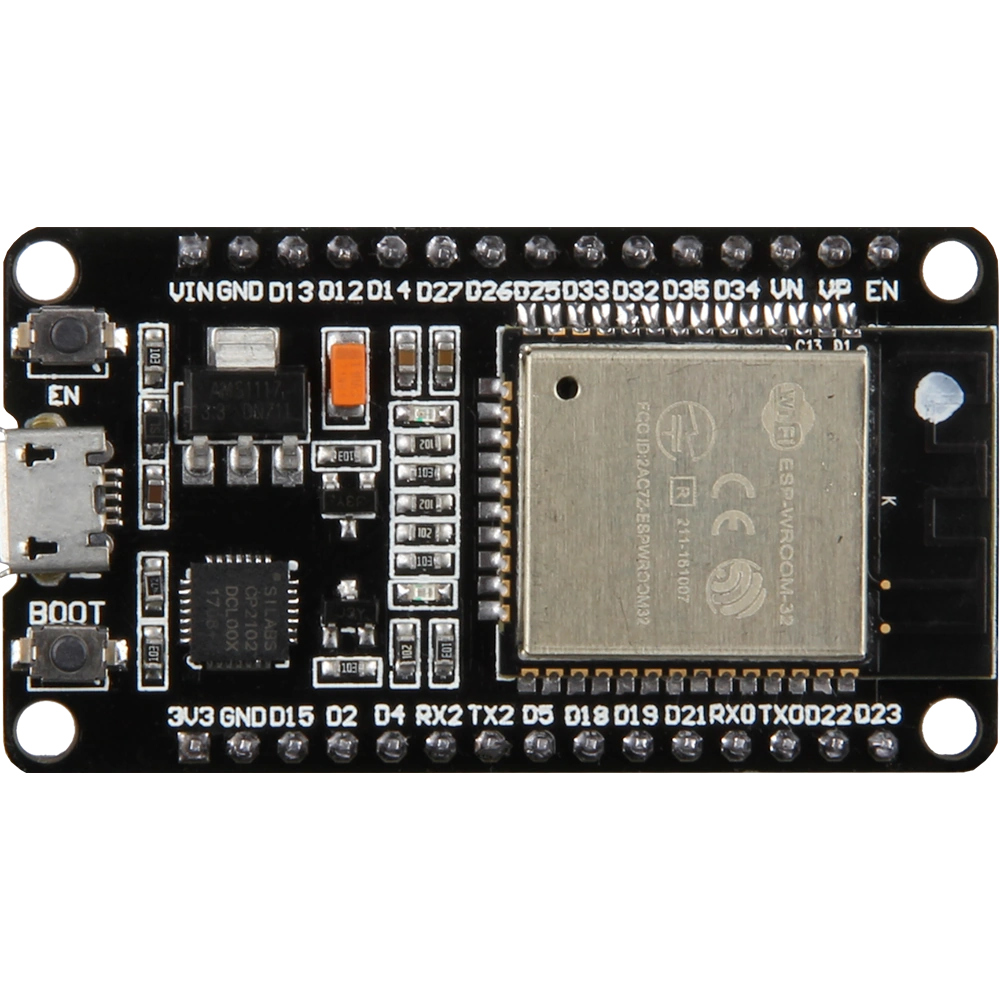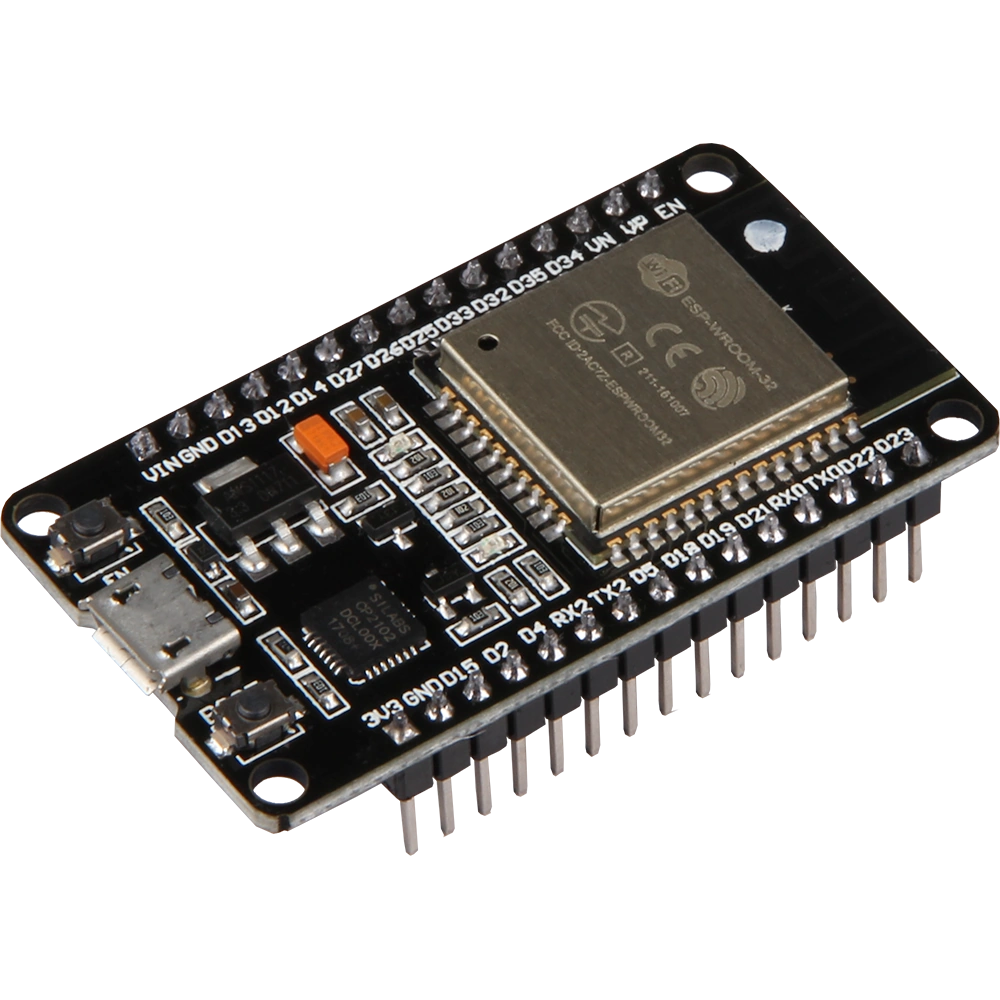
Table of Contents
Introduction
The NodeMCU ESP32 –also known as ESP32-DevkitC– features as you may have already guessed an ESP32 microcontroller by “Espressif Systems” This microcontroller has emerged as a powerful and versatile IoT development platform. In this post, we will delve into the detailed specifications of the NodeMCU ESP32, including its digital and analog I/O capabilities, pinout configuration, communication interfaces, memory specifications, power requirements, and programming options. Whether you’re a beginner or an experienced developer, this comprehensive guide will equip you with the necessary information to leverage the NodeMCU ESP32’s capabilities and embark on exciting IoT projects.
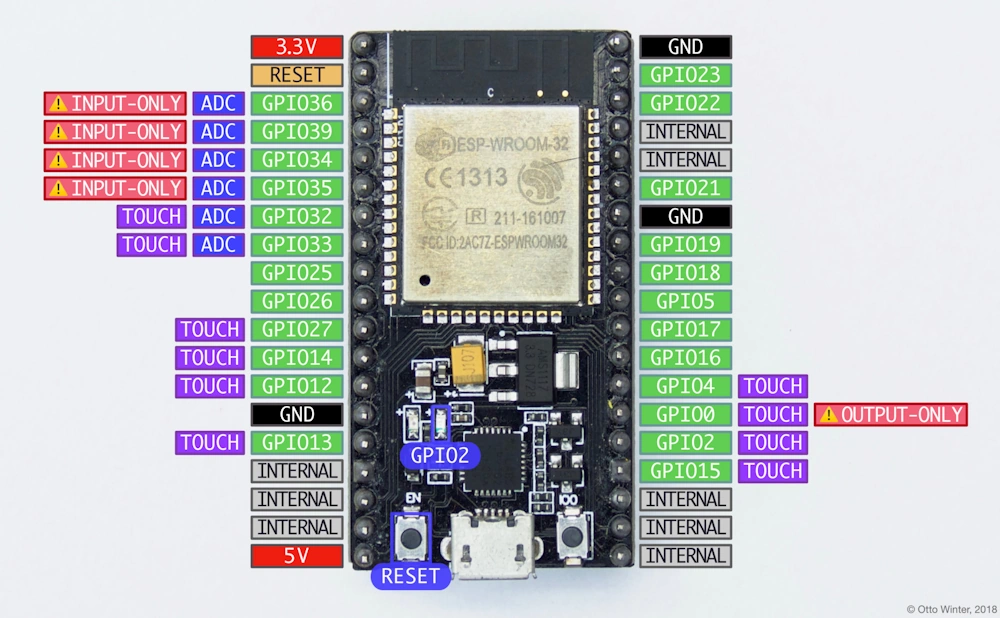
Specifications
The NodeMCU ESP32 microcontroller features a dual-core Xtensa LX6 processor running at 240 MHz, providing significant processing power for demanding applications. It boasts a generous 512 KB of SRAM for efficient program execution and data storage. Additionally, this microcontroller board offers comes with 4MB of flash memory on board.
Digital I/O Pins
The NodeMCU ESP32 microcontroller provides a remarkable array of 30 general-purpose input/output (GPIO) pins. These pins allow you to interface with external devices, sensors, and actuators for seamless control and integration. Each GPIO pin can be independently configured as an input or output, supporting a voltage range from 2.2V to 3.6V.
Additionally, any of the Digital I/O can be set as PWM.
Analog Input Pins
Alongside its digital I/O capabilities, the ESP32 offers a set of 15 analog input pins. These pins enable the measurement of analog voltages, making the microcontroller compatible with a wide range of sensors that provide analog output. The ADC (Analog-to-Digital Converter) on the NodeMCU ESP32 offers a resolution of up to 12 bits, ensuring accurate and precise analog readings.
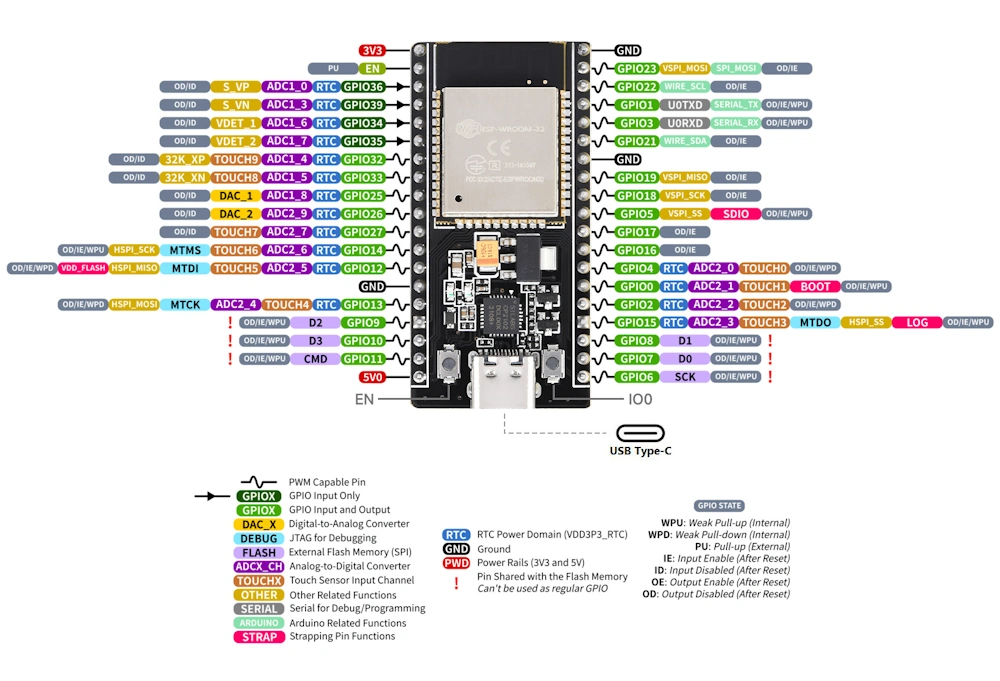
Special Pin Functions
The NodeMCU ESP32 incorporates specialized pins with unique functionalities, expanding its capabilities beyond traditional digital and analog I/O. It includes GPIOs with capacitive touch capabilities, allowing you to implement touch-sensitive controls. Additionally, the microcontroller features dedicated pins for boot and reset functions, facilitating easy initialization and debugging processes.
Communication Interfaces
The NodeMCU ESP32 offers an impressive selection of communication interfaces, including
- 1x SPI (Serial Peripheral Interface)
- 1x I2C (Inter-Integrated Circuit)
- 2x UART (Universal Asynchronous Receiver-Transmitter)
- 1x CAN bus (Controller Area Network)
These interfaces enable seamless integration with a wide range of devices, such as sensors, displays, and communication modules, expanding the possibilities for data exchange and control.
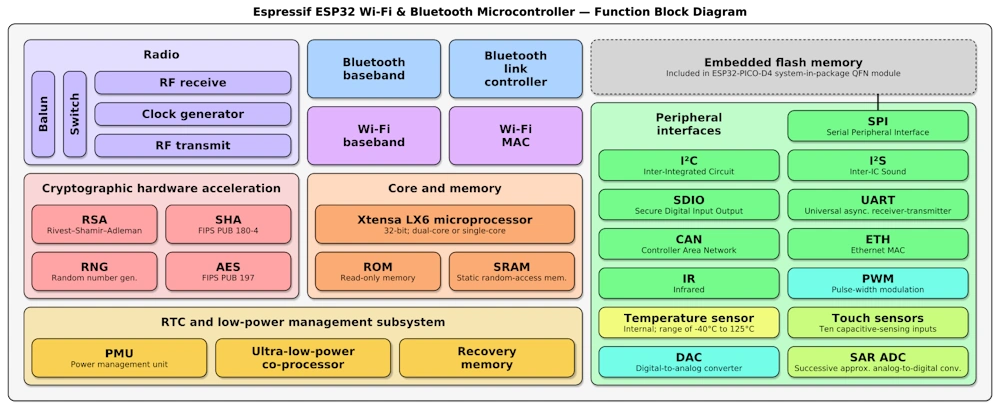
Networking
The NodeMCU ESP32 development board offers robust networking capabilities, making it well-suited for IoT applications that require connectivity. Here are some key features:
- Wi-Fi Connectivity: The NodeMCU ESP32 board comes with built-in Wi-Fi capabilities, supporting the popular 802.11 b/g/n standards. This allows it to connect to local Wi-Fi networks, access the internet, and communicate with other devices or cloud services.
- Access Point (AP) Mode: The ESP32 can also function as an access point, allowing other devices to connect directly to it. This feature is useful for creating standalone networks or for establishing direct communication between devices without the need for a traditional Wi-Fi router.
- Station Mode: In addition to acting as an access point, the NodeMCU ESP32 can also connect to existing Wi-Fi networks as a station. This enables the board to interact with other devices or services on the network, opening up possibilities for cloud connectivity and remote control.
- TCP/IP Stack: The ESP32 supports a full TCP/IP protocol stack, enabling communication over the internet using protocols such as HTTP, MQTT, and WebSocket. This allows the board to send and receive data to and from remote servers or cloud platforms, facilitating real-time data exchange and remote control of connected devices.
- Web Server and Client: The ESP32 can act as a web server, hosting web pages or APIs to provide a user interface or facilitate communication with other devices. It can also function as a web client, allowing it to interact with web services or retrieve data from remote servers.
- Network Security: The ESP32 supports various network security features, including WPA/WPA2 encryption for secure Wi-Fi communication. Additionally, it offers SSL/TLS support for secure communication with remote servers, ensuring the confidentiality and integrity of data exchanged over the network.
- Bluetooth Connectivity: Alongside Wi-Fi, the NodeMCU ESP32 features Bluetooth capabilities, including Bluetooth Low Energy (BLE) support. This enables communication with other Bluetooth devices, such as sensors, smartphones, or wearable devices, expanding the range of connectivity options.
These networking capabilities make the NodeMCU ESP32 a versatile platform for developing IoT applications that require seamless connectivity, both locally and over the internet. Whether it’s remote monitoring, data acquisition, or cloud integration, the NodeMCU ESP32 provides the framework for your project.
Memory Specifications
The NodeMCU ESP32 features 512 KB of SRAM, allowing efficient storage and execution of program code and variables. Along with 4MB of flash memory for program storage. In the event 4MB isn’t enough flash storage other modules are available with up to 16MB. The availability of sufficient memory ensures smooth operation of complex applications and accommodates the storage needs of libraries, data, and firmware updates.
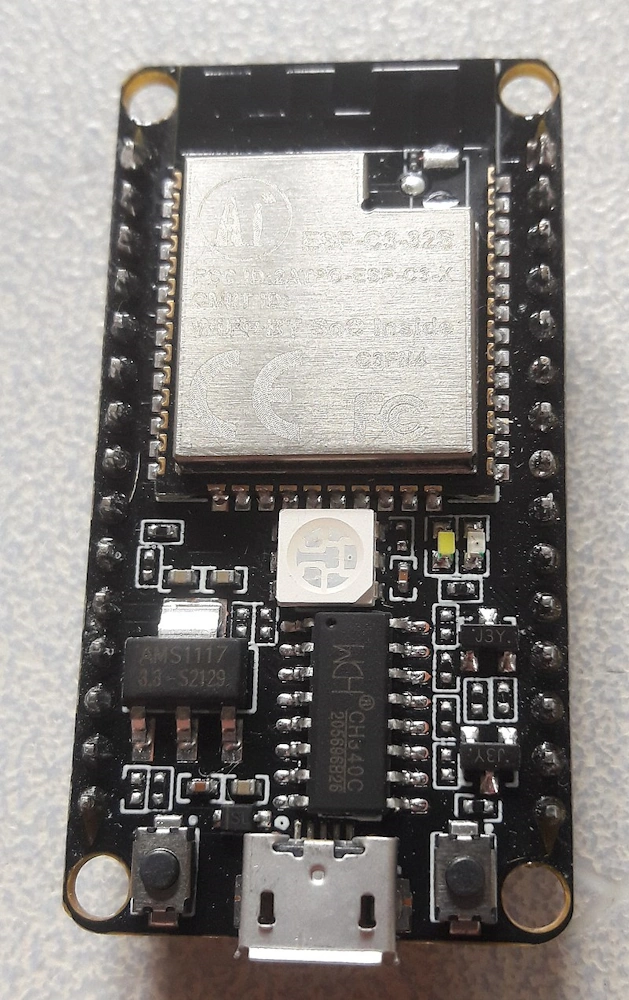
Power Requirements
The NodeMCU ESP32 is designed with power efficiency in mind, making it suitable for battery powered IoT applications. It offers various power-saving modes, including sleep and deep sleep, to minimize power consumption during idle periods. The microcontroller’s fine-grained power management system enables developers to optimize power usage, extending battery life for wireless and energy-conscious applications.
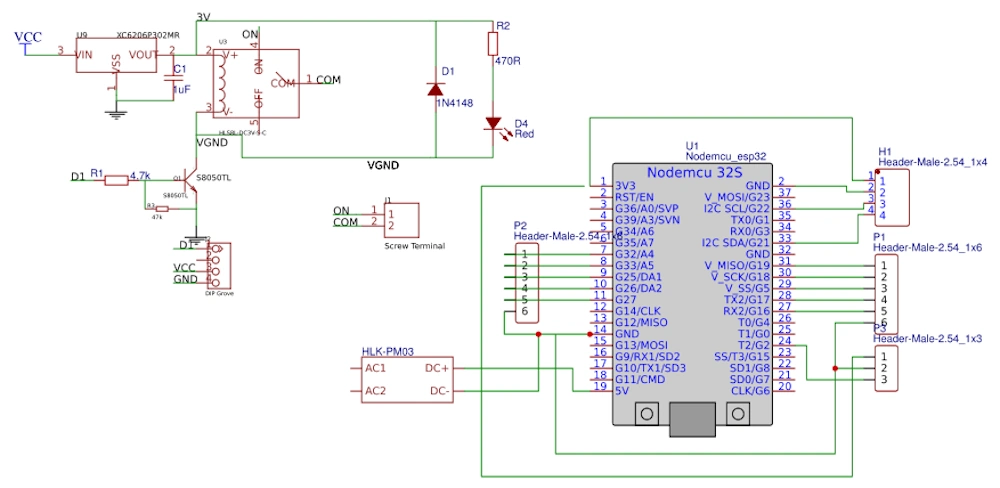
Programming Options
Programming the NodeMCU ESP32 can be done using various development environments (IDE’s)and languages. The Arduino IDE is a popular choice, providing a user-friendly interface, a vast library ecosystem, and simplified programming. Additionally, developers can leverage the Espressif IDF (IoT Development Framework) to harness the full capabilities of the NodeMCU ESP32.
The Espressif IDF offers a comprehensive set of tools, libraries, and examples specifically tailored for development of the ESP32 line of microcontrollers, allowing developers to access advanced features and customize their applications to a greater extent. Furthermore, the NodeMCU ESP32 supports programming in MicroPython, a high-level scripting language that simplifies code development and enables rapid prototyping.
You can get the most current information related to programming the NodeMCU ESP32 on the ESP32 Devkit Resources page.
Conclusion
The NodeMCU ESP32 microcontroller stands out as a powerful and versatile IoT development platform, offering impressive specifications, extensive digital and analog I/O capabilities, a range of communication interfaces, ample memory options, and efficient power management. With its diverse programming options, including the Arduino IDE, Espressif IDF, and MicroPython, developers of all skill levels can explore and unlock the potential of the NodeMCU ESP32. Whether you’re building connected devices, sensor networks, or IoT prototypes, the NodeMCU ESP32 or another board based on the ESP32 chip provides tools and flexibility to bring your ideas to life. Embrace the power of the NodeMCU ESP32 and embark on your journey to create innovative and impactful IoT solutions.
Related
Does the NodeMCU ESP32 not sound right for you or this particular project? See our Microcontroller Boards Comparison Table to see if you can find one more to your liking? You can see all of the microcontroller boards that we have reviewed so far here.
